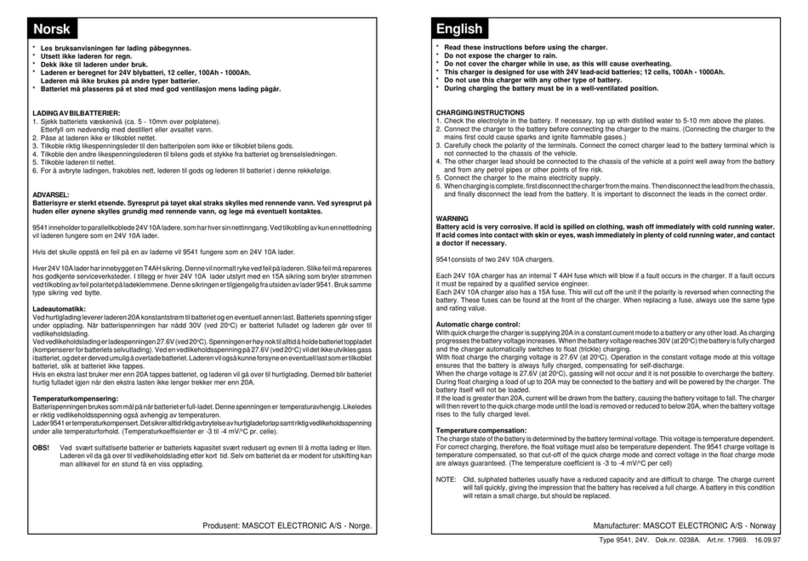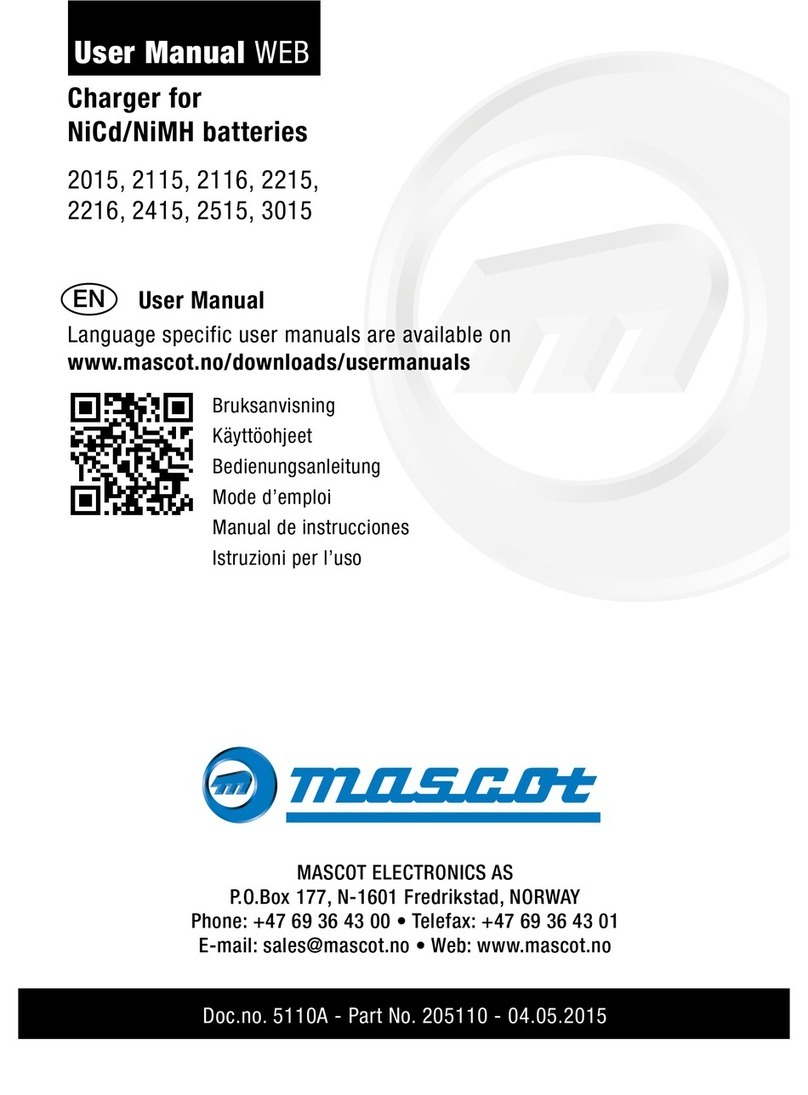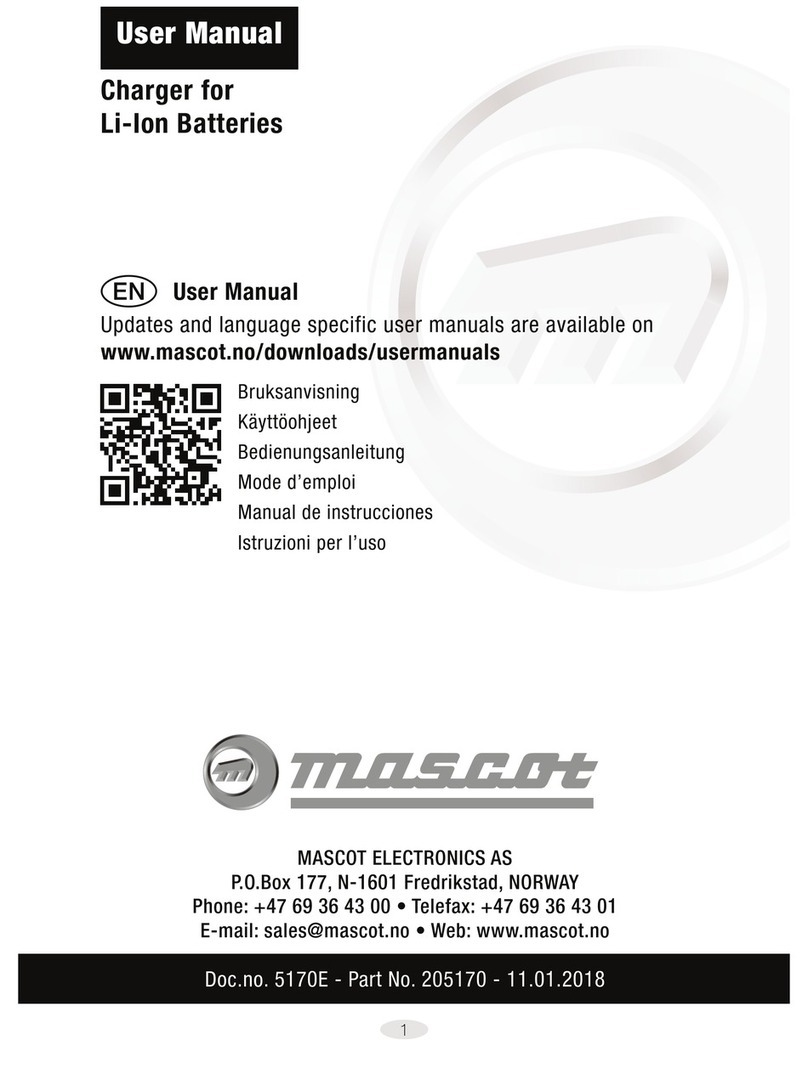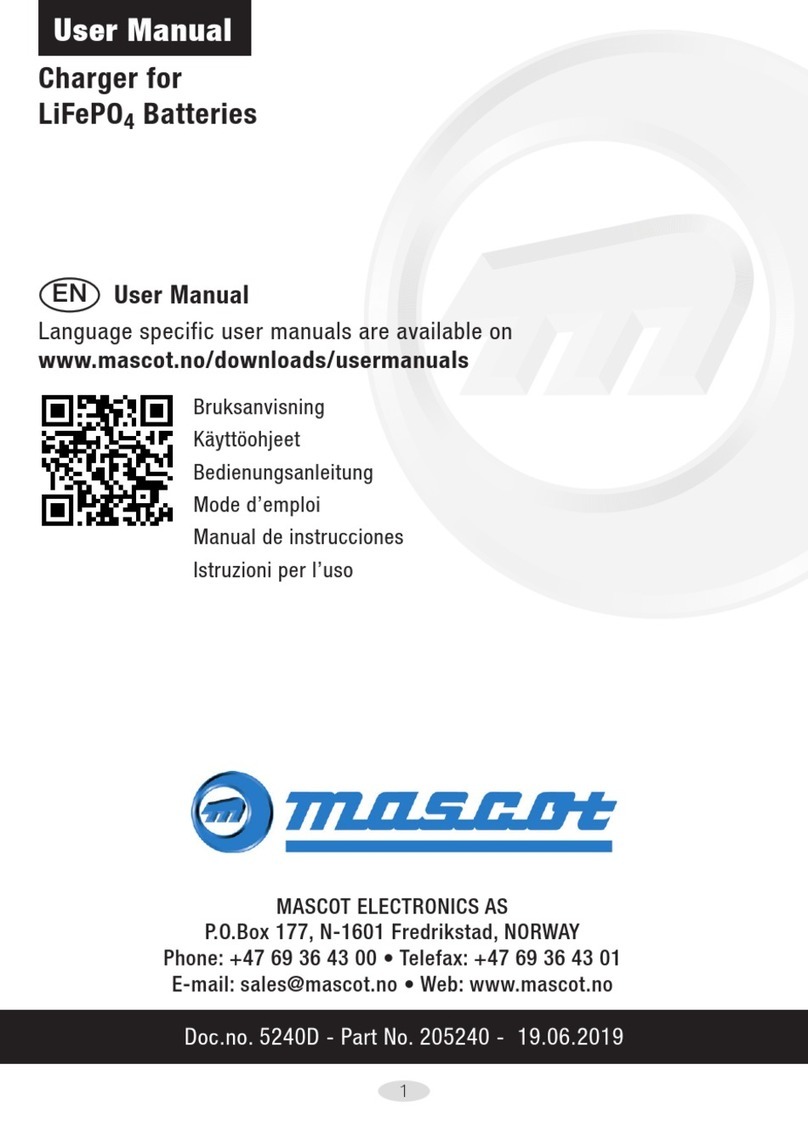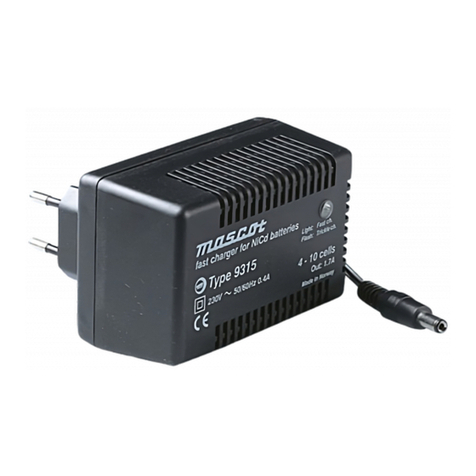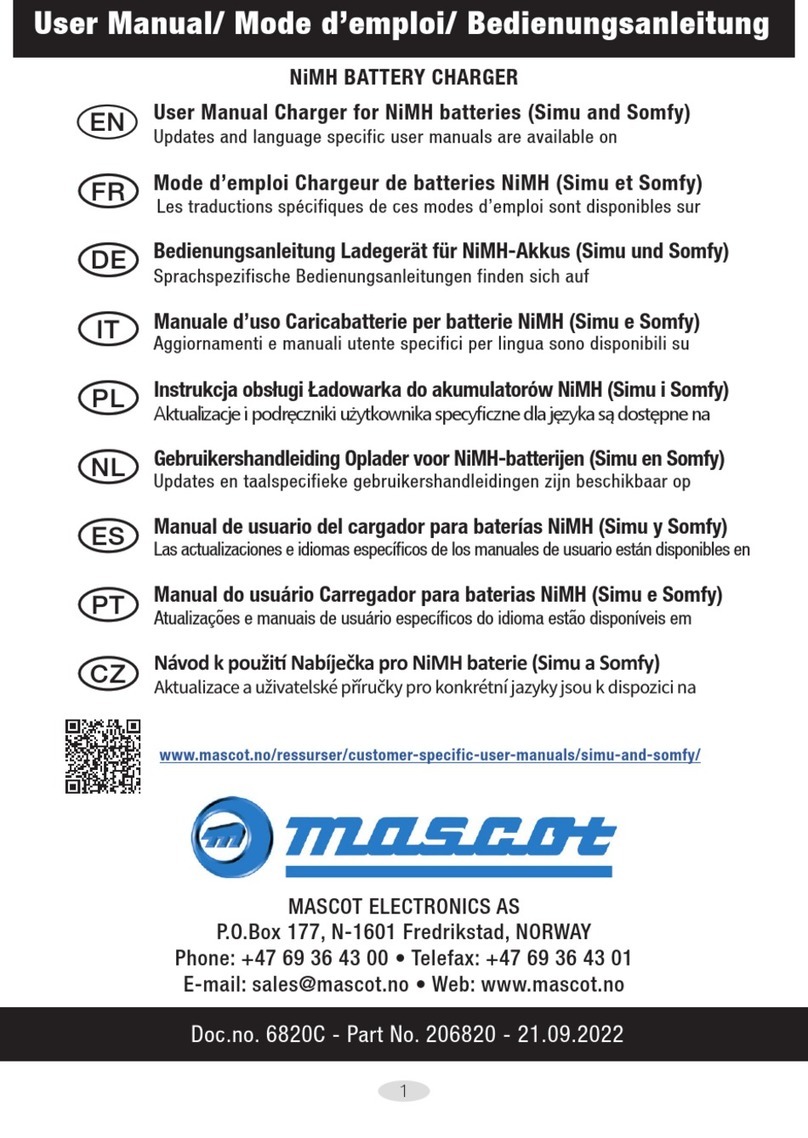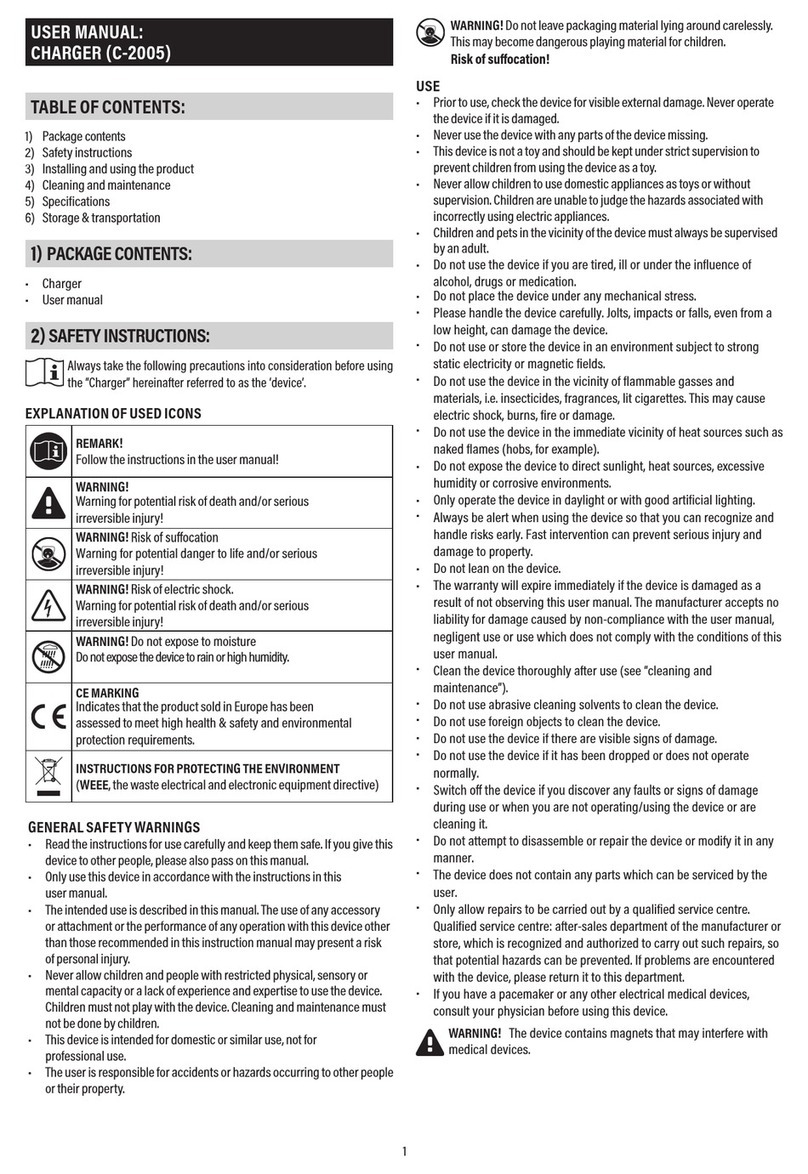
This charging unit is designed to charge lead acid accu-packs with a rated voltage of 12V.
The accumulators must be suitable for a charging current of
2,7A.
Dependent on the
accumulator manufacturer, the accumulator’s minimum capacity required is
7,2-l
1Ah.
If
in doubt, check with manufacturer.
The storage battery meets the safety regulations EN
603362-29:96
and may only be
connected to alternating voltage mains of 230V.
VDE regulations apply, in particular DIN VDE 0700, Part 29.
COWNR
1.
Lead Acid Accumulators
2.
Safety Instructions
3.
Characteristics
4.
Operating Instructions
5.
Technical Data
6.
Overview
The connections of the charger may contain a maximum of 15V.
Non-rechargeable batteries may not be charged
with
this equipment.
Mains- and charger units must be kept out of children’s reach.
In commercial facilities, the Health and Safety Regulations relating to electdcal work carried
out, must be followed.
In schools, educational facilities, hobby- and DIY workshops it is recommended that the
usage of mains- and charger units are supervised by trained personnel.
l&LEAD
.
Lead acid accumulators consist of two electrodes, which are housed in ‘an electrolyte,
therefore an accumulator is a chemical element inside which chemical reactions are
occurring. Due to the reversible nature of these processes, accumulators can be recharged.
This accumulator is designed for charging lead acid accumulators. In lead acid accumulators
the positive electrode consists of lead oxide and the negative electrode of metallic lead.
Diluted sulphuric acid is used as an electrolyte.
The voltage of
a
lead acid accumulator cell is 2V. The total voltage for the accumulator is:
amount of cells x 2V. Most manufactured lead acid accumulators carry a voltage of
2V,
6V
and 12V. Unloaded this voltage may be greater. During charging the voltage drops
dependent on the condition of the accumulator. This is caused by its inner resistance.
When opening casing or dismantling parts, voltage laden components are being
released.
Connecting points may also be loaded. Before an adjustment, service, installation or
exchange of parts, the equipment must be disconnected from all electrical sources.
Opening of the housing and exchange of parts of the equipment, adjustment, service or
installation must be carried out by a qualified electrtcianlengineer, who is aware of possible
dangers and Health and Safety Regulations.
Condensators inside the device may still be charged, even after the appliance has been
disconnected from all electrical sources.
It must be ensured that only fuses of the correct type and the correct rated voltage are being
used as replacements. The use of repaired fuses or
bridghg
of the safety bracket is
inadmissible.
II! ATTENTION Ill
To charge an accumulator, the so-called ‘loading capacity’ is needed, which is greater than
the ‘no load’ voltage. In addition, the amount of the voltage-input must be higher than the
charge which is withdrawn thereafter. This relation of supplied and used
charge
is called
‘charging factor’.
The withdrawn capacity, which largely depends on the electric discharge, directly affects
the condition of the accumulator. The charge input cannot be used as a form of measure
as
part of it gets lost i.e. transformed into heat.
The capacity which is printed on the accumulator, is the maximal theoretical charge amount
which the accumulator can produce. This means that an accumulator with
7,2Ah
can
theoretically produce electricity of 360
mA
over 20 hours. These values depend very strongly
on various factors (i.e. condition of accumulator, discharged electricity, temperature etc.).
,The
term c-rate is used widely when dealing with charging batteries. The c-rate is the value
of electricity, which is normally used for charging and discharging. This electric value
measured in amperes, equals the rated capacity in ampere hours, for example the c-rate
of an accumulator with
7,2Ah
equals
c=7,2A.
Storage batteries can discharge themselves over a period of time. This characteristic is
named ‘independent discharge’.
Page 2 av 24
Typ964012V
Ch~.1721.Mm201721.
13.12.f
Exchange of fuses may only be carried out by a qualified electrician who is familiar with
possible dangers.
Never switch on your appliance immediately after it has been brought in from a cold room
to a warm place. This causes condensation which could destroy your device under
unfavourable circumstances. Keep your appliance switched off until it has adapted to room
temperature.
The wearing of metallic or conductive jewellery such as necklaces, bracelets, rings etc.
when working with mains- and charging devices is forbidden.
It is forbidden to use charging devices on humans and animals.
During use, care should be
taken-to
provide sufficient ventilation. The ventilation slits of
the housing unit must never be covered. The device is to be run in such a way that air can
circulate freely. Cooling of the appliance ensues mainly through convection (circulation of
warm air).
Charging devices and their connected accu-packs may not be used without supervision.
I
Page
3
av
24
TvpS4012V.
0&~.1721.Mn.201721.
1312.99

